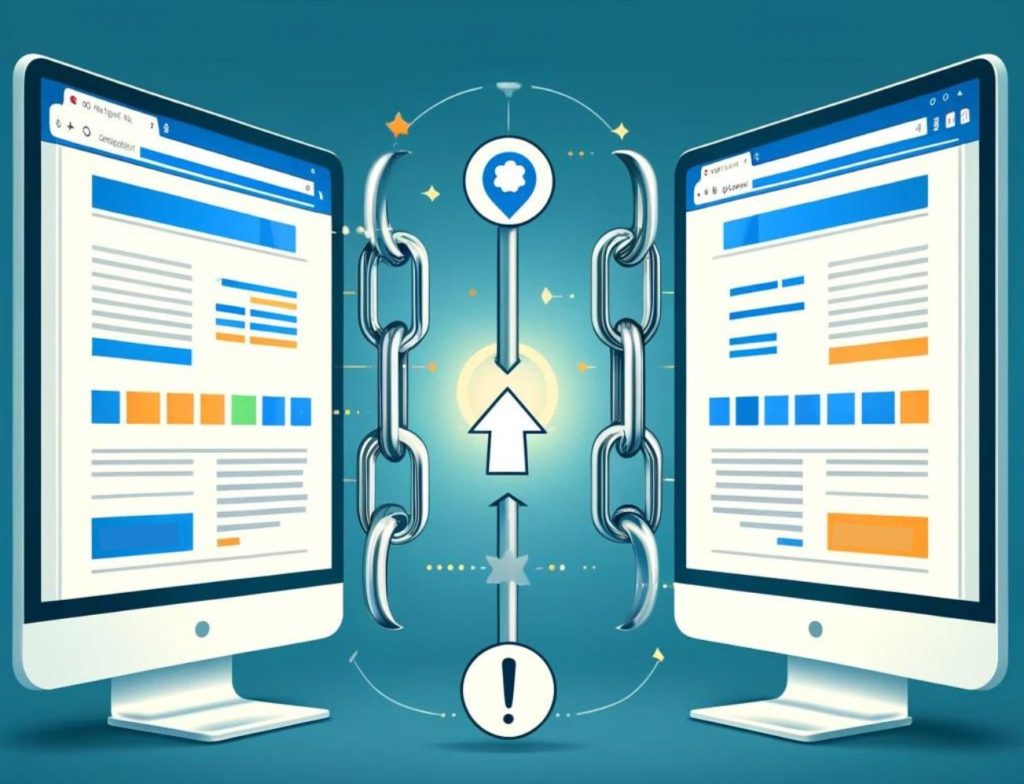
When it comes to SEO, you may already be pretty familiar with linking highly-searched keywords and phrases to boost ranking and search results; however, link building is the process of connecting with other company websites and having them host links on their site, which in turn direct readers to a page on your website. This is also called a “back link” or “backlinking.”
So, what does this achieve, exactly? Search engines are all about quality. In fact, in the world of SEO, more does not equal better — instead, quality link building reinforces the quality of the content itself. Really, the heart of link-building is relationships. When a search engine starts to see consistent link-building between reputable sites, your brand, site or content will rank higher within the search pages, (or SERP).
For example, if your company sells all-natural cosmetics, your content, and therefore, your products, will get noticed faster if, say, Vogue or Cosmopolitan, or even a well-known influencer shares a link to your content in an online beauty roundup versus an unknown beauty blogger.
Strategies for Effective Link Building
If you’re wondering how to land links on legit, authoritative sites, there’s a few key strategies you’ll need to keep in mind.
Step 1 – Understand your audience’s motivations. At the end of the day, getting traffic to your site starts with truly understanding your target audience. This means knowing your audience’s:
- Demographic (e.g. age group, gender, and marital status)
- Preferred mode of communication
- Pain points/challenges
- Thought process
- Purchasing decision triggers
Attracting more people to your website not only requires pinpointing your ideal audience, but it also requires understanding who your audience isn’t. This will help you streamline your messaging and content so you’re targeting the right partnerships.

Step 2 – Catalogue the sites that appeal to your audience. Once you really understand the motivations and the psyche of your audience, you can then start to target the sites and companies which interest this audience most. Think back to some of those questions above. Millennials, for example, tend to have purchasing habits that prioritize memorable experiences and social identity. So, finding websites that already connect with millennials (if that’s your target audience) at these wavelengths is a critical next-step for connecting with them.
Step 3 – Write consistent, high-quality content. Content will always be king. There are no shortcuts. As search engines become more sophisticated, the less wiggle room there is for mediocrity. There’s simply too much content and too much content out there to be sub-par. In order to get other websites to link to your content, your content needs to be good enough to attract them and convince them to tie their brand with yours. When in doubt, go back to the audience details above. Ask yourself: How do they shop, where do they go to get information, and more importantly, how can your product solve their key pain points? Of course, you also have to consider the competition. The real secret to successfully reaching your audience is figuring out how you solve their problems and communicate it in a way that sets you apart. What makes you uniquely positioned to reach your target audience? Once you figure that out, you’ll need to highlight that quality as much as possible.
Step 4 – Find a home for your content. Once you’ve got your content nailed down, it’s going to need a good home. Here, you’ll want to use that hero list of brand and company sites as a guiding light. But, keep in mind, this is the auditing stage and the point in the process—for both your own content as well as that of your prospective backlink. Every prospect may not be the best fit. So, decide which pieces of content would work best with what site or contributor. You also don’t want to send all your content to the same brand/site. In fact, that could hurt your chances of your content being picked up at all. Finding a home for your content links will take some research, strategy and consideration… so don’t rush it!
Step 5 – Network & Connect. From here, you want to reach out and connect with the brands and sites! Email and introduce yourself, or connect on social media. Make sure to clearly explain your brand, audience and unique messaging. This part of the process requires some patience and often you may not hear back at all. This isn't uncommon, so don’t be discouraged, and don’t resort to content-blasting. Keep researching, connecting, and thoughtfully matching your content with prospective brands. Eventually, you’ll find a shoe that fits.
Tips For Strong Back-Links
Because this process can take a lot of work, understandably, many have resorted to link spam to make up the difference. But here’s the problem: Google has gotten really smart (like, scary smart) and can sniff out inauthentic content from a mile away. Google wants you to earn links, not force them, but this is a thin line to walk as a marketer.
To avoid unnatural linking/link spam and to prove to Google your backlinks are strong and authentically forged, here’s a few things to keep in mind:
- Pass on the spam. Not all links are created equal — If a site looks spammy, it probably is. Avoid linking with brands or sponsors who don’t align with your brand and content, and only partner with authoritative sites.
- Use relevant anchor text. Nothing screams bad backlinking like an anchor text that comes out of left field. Make sure your anchor text is topic-centric and actionable.
- Don’t engage in link swaps. Unfortunately, “I’ll scratch your back if you scratch mine” doesn’t win you any favors in the eyes of the search engines. Link exchanges are a big no-no, and in fact, Google guidelines outline warnings for excessive linking.
Avoid paid linking. If Google catches onto a paid linking connection, there are penalties for the offending websites. The punishment: the dark, hopeless vacuum that is any Google result after Page 2… No, but seriously — if Google or a handful of other search engines catch websites paying for backlinks or an exchange of services, their search ranking will be severely hindered.
